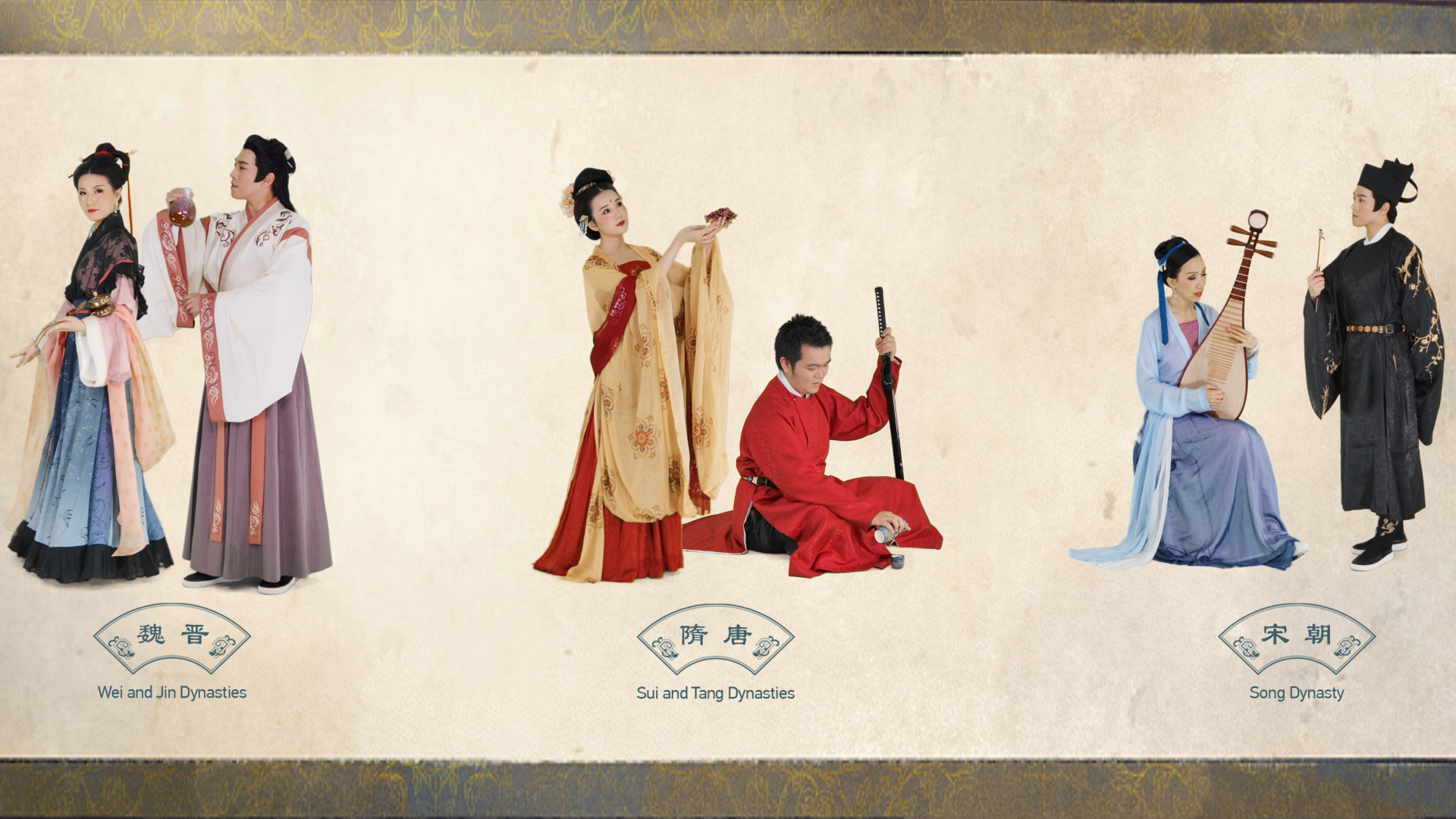A Journey Through Different Styles of Hanfu
Embark on a journey through the rich tapestry of Chinese history, and you will find the different styles of hanfu, a traditional attire that speaks volumes about the cultural evolution and the aesthetic sensibilities of the people. The Hanfu is not merely clothing; it is a living, breathing testament to the dynasties that have shaped China’s past. As we delve into this exploration, we shall uncover the layers of meaning and beauty woven into each style.

The Evolution of Different Styles of Hanfu
From the Zhou dynasty to the Qing, each era has left its imprint on the different styles of Hanfu. The Zhou dynasty introduced the deep robes with wide sleeves, symbolizing the grandeur and philosophical depth of the time. As we move through the Han dynasty, the styles became more refined, with the introduction of the ruqun and the zhiju, reflecting the elegance and sophistication of the period. The Tang dynasty, known for its openness and cultural exchange, brought forth the elegant and flowing robes that allowed for greater freedom of movement, embodying the spirit of the era.

Cultural Significance of Different Styles of Hanfu
The different styles of Hanfu are not just a reflection of the times but also a canvas of cultural significance. Each fold, each seam, carries with it the weight of tradition and the aspirations of the people. The color schemes, patterns, and materials used in Hanfu are carefully chosen to convey respect, status, and even the seasons. For instance, the use of bright colors and intricate embroidery during the Ming dynasty was a symbol of wealth and power.

Revival and Modern Interpretation of Different Styles of Hanfu
In recent years, there has been a resurgence of interest in the different styles of Hanfu. This revival is not just a nostalgic look back but a reinterpretation of the past through a modern lens. Young people are embracing Hanfu as a form of cultural identity and self-expression. The traditional designs are being given new life with contemporary twists, making them relevant to the current generation.

The Future of Different Styles of Hanfu
As we look to the future, the different styles of Hanfu continue to evolve, reflecting the dynamic nature of Chinese culture. The integration of technology, sustainable practices, and global influences will undoubtedly shape the Hanfu of tomorrow. Yet, at its core, the essence of Hanfu will remain, serving as a bridge between the ancient and the contemporary, the traditional and the modern.








The article’s mention of the future of Hanfu is exciting. The integration of technology and global influences will undoubtedly shape the Hanfu of tomorrow. The image of evolving Hanfu styles shows how this traditional attire can adapt to modern times while retaining its essence.
As someone who loves traditional clothing, I’m thrilled to see the revival of Hanfu. The modern interpretations mentioned in the article are a great way to keep this cultural heritage alive.
The article’s focus on the aesthetic preferences of different dynasties is fascinating. As an art historian, I appreciate the detailed analysis of how each era’s aesthetics influenced Hanfu design.
I’m a traveler and often wonder how practical Hanfu would be for daily wear, especially when traveling. The elegance and sophistication of Hanfu are undeniable, but I’m curious about its comfort and ease of movement. The Tang dynasty’s flowing robes seem more practical for travel, but I’d love to hear more about the practicality of other styles.